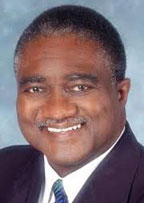
South Africa’s best kept secret
By George E. Curry
JOHANNESBURG, South Africa – When Nelson Mandela and his African National Congress comrades were plotting to overthrow the white minority-rule apartheid regime in South Africa, Lilies Farm in Rivonia, just north of Johannesburg, served as their secret hideout.
Today, 19 years after South Africa made a bloodless transition to a democracy with the election of Mandela as its first Black president, the picturesque land, now called Liliesleaf, is South Africa’s best kept secret.
Arthur Goldreich and Harold Wolpe bought the farm in 1961 to serve as headquarters for the underground Communist Party and as a safe house for political refugees, including Man-dela and Govan Mbeki, the father of Thabo Mbeki, who succeeded Mandela as president.
Goldreich and his wife, Hazel, served as the public face of the sprawling residence. To the outside world, they were living a life of affluence with plenty of Black handy men a-round to make their life easier. But the carefully crafted public perception masked plans to end minority rule by violence. The farm gave birth to MK (Umkhonto we Sizwe – the Spear of the Nation), the military wing of the African National Congress.
“From its headquarters the National High Command had planned its campaign of guerrilla warfare, sabotage and violence, Joel Joffe wrote in The State vs. Nelson Mandela: The Trial that Changed South Africa. “It has installed a radio transmitter, known as Radio Liberation, and had made a study of armaments and explosives and produced plans for large-scale production of grenades, time-bombs and other explosives.”
On the carefully manicured land was a large manor house for the owners, with several outbuildings that housed revolutionaries posing as workers.
“I moved in under the pretext that I was the houseboy or caretaker who would look after the place until my master took possession,” Mandela, an attorney, wrote in his autobiography, Long Walk to Freedom. “I had taken the alias David Motsamayi, the name of one of my former clients. At the farm, I wore the simple blue overalls that were the uniform of the Black male servant.”
The groundwork for converting the farm into a museum began in 2002. The restoration project preserved the farm’s original character; approximately 60 percent of the infrastructure uses the original bricks.
A tour of the museum includes a stop in a room with a 3-D presentation that incorporates video and photographic images of the ANC leaders and their surroundings. Using two aluminum “navigators,” visitors can look back at various aspects of apartheid. In an adjoining room, an old radio plays the 1960 Nobel Peace Prize acceptance speech by ANC President Albert Luthuli, who was honored for leading a non-violent struggle against apartheid.
Across the lawn, in a row of living units, is Mandela’s old apartment. Inscribed on a rectangular window outside are the words: “Room 12 Nelson Mandela’s Room.”
Before stepping inside, I took a deep breath, realizing I was about to walk into history – literally. After pausing, I slowly followed the tour guide inside, where I was suddenly face-to-face with a large photo of a young, dapper, smiling Nelson Mandela. His hair is neatly parted in the middle. The impeccably dressed Mandela is outfitted in a double-breast suit stylishly finished off with a pocket square.
The only furniture in the room is a desk used by Mandela. The writing on the desk stated, “On 20 April 1964, Nelson Mandela delivered his Statement from the Dock at the opening of the Defense case at the Ravonia Trial. He chose to not make a statement to avoid being cross examined. He spoke for five hours, clearly presenting his role in the underground movement and his conviction that the Liberation Movement had no choice but to resort to armed struggle against a white government that refused to listen to the grievances of its non-white people…”
The trial was preceded by a July 11, 1963 police raid on the farm that captured 19 revolutionaries. They were charged with sabotage, conspiring to launch a violent revolution against the state, and advancing the cause of Communism. Eight ANC members, including Nelson Mandela who was already in custody at the time of the raid, were sentenced to life in prison. Mandela served 27 years; Walter Sisulu, 26 years and Govan Mbeki, 24 years.
In the epilogue to Joel Joffe’s book, Edelgard Nkobi-Goldberg noted that documents recovered after the trial showed “…The American CIA and the British M15 kept Liliesleaf under observation. Both secret services had long been actively engaged in these activities at least from the time of Nelson Mandela’s international travels in 1962. They had informed the South African security service about everything that happened during his journey and followed his movements after his return to South Africa. And that might have led to his arrest.”
Regardless of what prompted the arrests, there is no doubt that the Ravonia Trial put South African apartheid on the world’s agenda. Although the museum is advertised as a tourist spot, it remains one of South Africa’s best kept secret.
